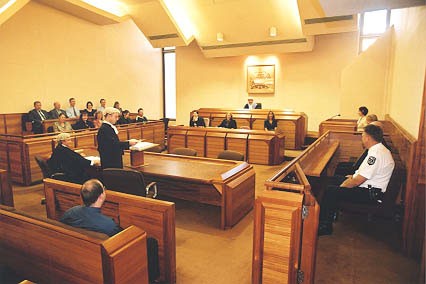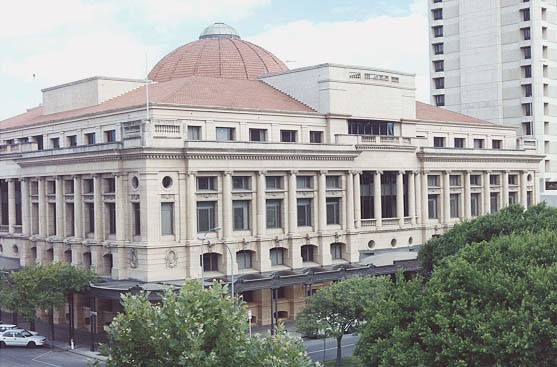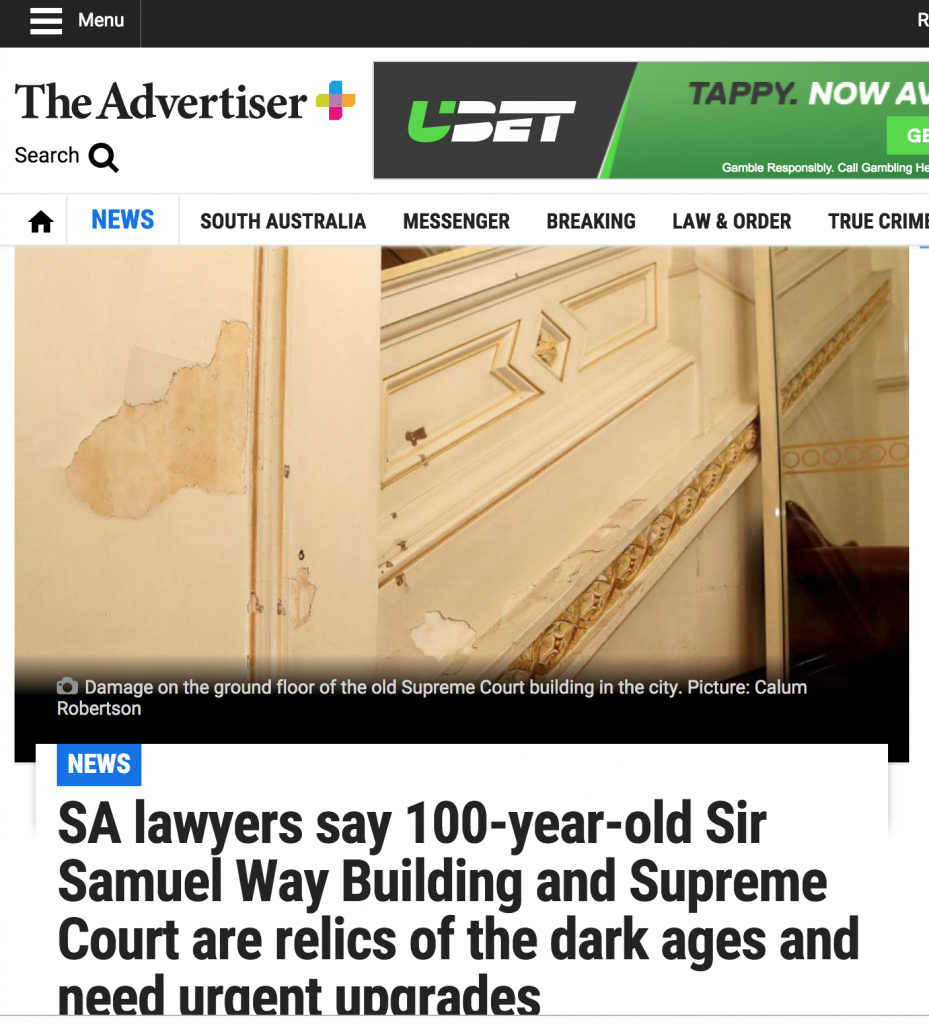Visiting Courts and having a wee
During October 2018 I attended a court appeared in the Sir Samuel Way building. My goal on the day was to provide support to a family. It didn’t take long to notice court accessibility issues in the building. After attempting to locate an accessible restroom on the third floor, I headed to the ground floor. No luck there and was directed to the first floor. Later I noticed signs advising the location of the accessible toilets. My powered wheelchair allows me to zoom around quickly, and people with less mobility may take 15 minutes to find the restroom and return to the courtroom.
Court Accessibility courtroom issue
As I wasn’t in a position to take photographs, I thank the Court Administration Authority of South Australia for the photo below. Although it is difficult to notice, the typical courtroom is on many different levels. And accessible by steps, which is a problem for wheelchair users and other people with mobility restrictions. After entering the court, my only choice was to place my wheelchair in an area that was no larger than eight square metres.

On the day there was a possibility that I would be asked questions. As it happened, I wasn’t required, but it would have required me to shout across the court to the judge. In addition to the judge, there were many other people present, similar to the photograph. They included lawyers, marshalls of the court, the three people that sit in front of the judge and the defendant. None of these locations is accessible by wheelchair. People in wheelchairs do become lawyers, judges, other roles within the court, and wheelies also need to obey the law.
So why are people in wheelchairs not able to perform these roles in the Sir Samuel Way building?
If the entire jury consisted of males in wheelchairs, they would be ’12 Angry Men’.
History of Sir Samuel Way building
My childhood in the 1970s included visits to the Moores department store. It occupied the building before the current tenant, the Courts Administration Authority of South Australia. The Moores store had the goal of being an alternative to shopping in Rundle Street. South Australian businessman, Charles Moore, purchased land and built his own store. The courts building opened in 1983 and was named in honour of Sir Samuel Way. He was the longest serving Chief Justice in South Australia.
I expect there was little thought about wheelchair accessibility in 1983. However, it is now 2018. (Thank you to the CAA of South Australia for the following photography)

Contacting CAA of SA about court accessibility
I emailed the authority and shared my experience, and asked them a few questions including…
Another visit to courts
SA lawyers say 100-year-old Sir Samuel Way Building and Supreme Court are relics of the dark ages and need urgent upgrades
 During my research about accessibility, I came across a newspaper article from 2016. Click here to read it.
During my research about accessibility, I came across a newspaper article from 2016. Click here to read it.
The article mentions…
- COURTROOMS and witness boxes inaccessible to wheelchairs.
- TOILETS situated so far from courtrooms, it takes a 10-minute round-trip to use them – and they, too, are wheelchair inaccessible and lack breastfeeding facilities.
- It is embarrassing and unacceptable that people with disabilities are being marginalised and a lack of government investment has left our court buildings lingering in the dark ages.
My experiences and observations were similar to the reporter from 2016.
The letters arrive
I check my PO box every few months and found two letters from the CAA. How quaint and outdated. The letters could have been attached to emails and delivered immediately. Or just send an email.
The CAA has received funding to make changes to the Samuel Way building in 2019. I asked for a tour of the facility once the changes were completed, and suggested the media be invited. A good news story that shares how the CAA is encouraging PWD to have a career in the judicial system. The CAA mentioned that there were no plans to increase the number of accessible toilets. Apparently, there is a lack of space. I was disappointed with the response and mentioned that the average accessible toilet is around 3.5 m2.
To be continued.
Read about my experiences in a wheelchair in the Adelaide Festival Centre.
